
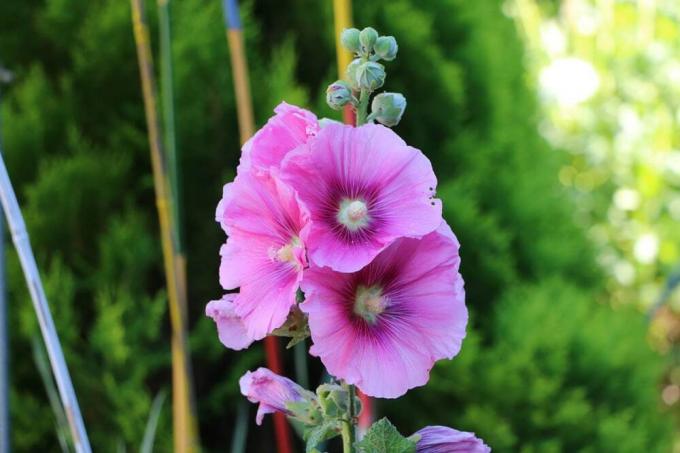
Table of contents
- A to G
- K to P
- R to Z
In contrast to annual summer flowers, hardy perennials beautify the garden bed for several years. There are many varieties that also feel at home in sunny locations, where they thrive and bloom profusely.
A to G
columbine(Aquilegia)
Columbines belong to the buttercup family and unfold in unusual flower shapes. That is why the plants have many strange names in the vernacular, including elf glove, jester's cap, dove flower, Venus chariot and gypsy bell. The colorful perennial provides attractive cut flowers for wildflower bouquets in early summer. With the short-growing varieties, cultivation is also possible in small-format gardens.
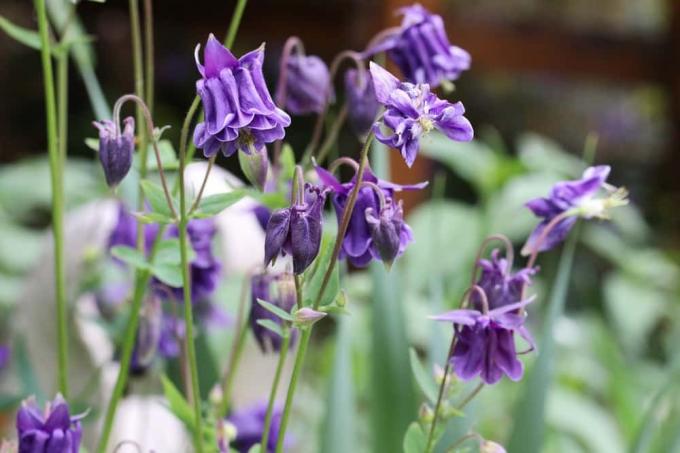
- Both tall varieties and dwarf forms
- Growth height from 15 to 90 cm, depending on the variety
- Flower colors are blue, blue-violet, blue-white, yellow, red and white
- Flowering period from May to July
- Pruning after the first flowering leads to late summer flowering
- Nutrient-rich, fresh and humus-rich soil
- Pay attention to well-drained qualities, avoid waterlogging
- Popular varieties include Blue Star, Jewel White, Nora Barlow and William Guiness
scent nettle(Agastache)
The scented nettle belongs to the mint family and forms pretty flower candles. The plant beguiles with a fresh scent and convinces with a very long flowering period. The flowers attract numerous insects, including the busy bees. Both the flowers and leaves are edible and have an aniseed and mint flavor. In addition, the herbaceous plant is relatively easy to care for and resistant to diseases and pests.
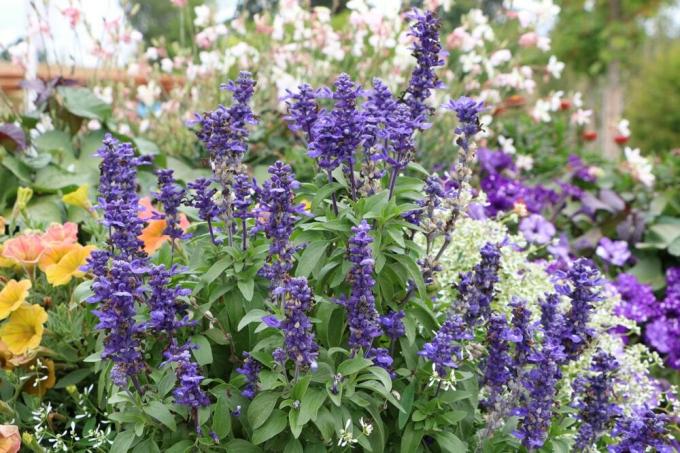
- Herbaceous and clump-forming growth
- Plant height from 30 to 50 cm, tall varieties up to 150 cm
- Forms white, pink and blue-violet flower colors
- Flowering period from June to September
- Well-drained, nutrient-rich and not too moist soil
- A sandy and slightly dry substrate is ideal
- Absolutely avoid waterlogging
- Needs additional winter protection during severe frosts
flame flowers(Phlox)
Flame flowers are classic perennials for the cottage garden and belong to the orchard family. The plants bloom colorfully and tirelessly, and they also spread a summery scent. This scent is most noticeable on hot days and in the evenings. You can choose from early, medium and late flowering varieties in many different colors that can be planted in combination. If you cut back after the first flowering, the plants will bloom again.
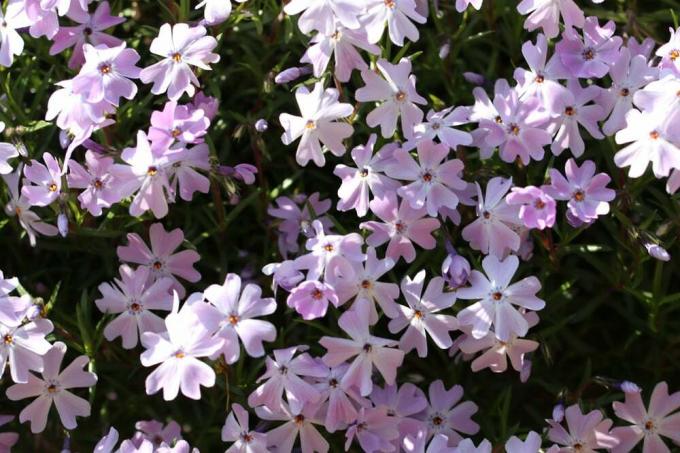
- Growth height from 70 to 100 cm
- Blue, pink, red, purple and white flowers
- Depending on the variety, mixed-colored flowers are possible
- Flowering period from July to September
- Humus-rich, deep and moist loamy soil is ideal
- Absolutely avoid waterlogging
- Fertilize in spring with compost or horn meal for rich flowering
- Popular varieties are Blue Paradise, High and Meadow Phlox
chamois root(Doronicum)
Gemswurz is a profusely flowering perennial whose flowers resemble daisies. The short cultivars fit well in the front areas of the garden beds and flower early in spring. In addition, the perennials are very popular with bees and are suitable as cut flowers for the vase.
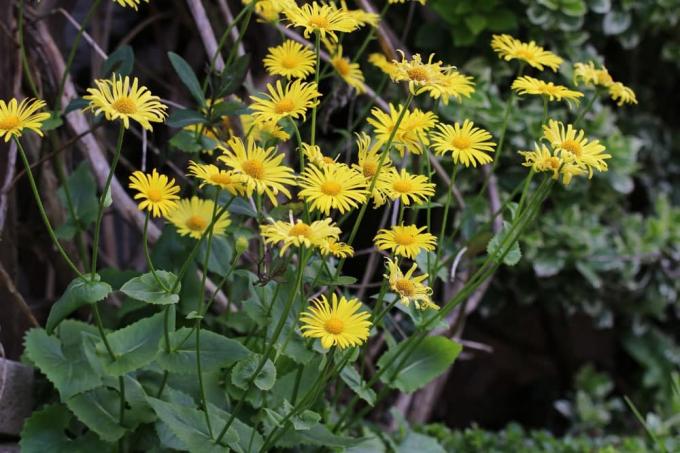
- Upright and clumpy growth
- Reaches growth heights of 15 to 60 cm
- Yellow and radiating flowers
- Flowering time is from April to May
- Well-drained, sandy-loamy and fresh soils are ideal
- Lime-tolerant perennial plant
- Substrate must never dry out, but avoid waterlogging
- Popular varieties are Austrian Gemswurz and Gemswurz Magnificum
- Synonyms: Gemswurz and Chamoiswurz
K to P
blanket flower(Gaillardia)
Blanket flowers come from the daisy family and are tirelessly flowering plants. The summer flowers show their colorful blooms for many months into the gardening season. Not only the garden owner is happy about this, but also insects looking for food. The garden perennials form their leaf rosettes directly above the ground, from which the flower stalks then protrude.
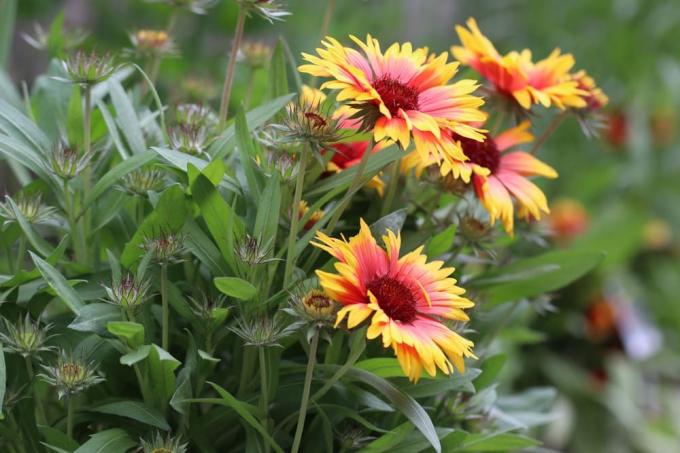
- Upright, bushy and dense growth
- Reaches heights of 15 to 75 cm, depending on the variety
- Multicolored flowers of yellow, orange and red
- Flowering time from July to October
- Moderately dry to fresh soil
- Slightly alkaline to slightly acidic pH value
- Nutrient-rich and humus-rich substrate, likes lime
- Heavy pruning required in autumn for winter protection
- Popular varieties are Bremen, Fanfare, Goldkobold, Tizzy and Tokajer
lupine(lupinus)
Lupins belong to the legume family and are an ornament for every garden due to their bright colors. Each plant bears several of the showy flower stalks. A second pile is encouraged by pruning after the first flowering. In addition, the protein-rich plant is also edible.
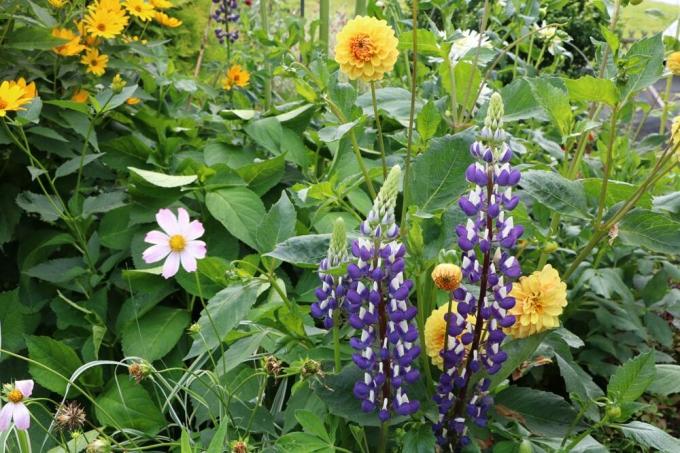
- Growth height from 80 to 100 cm
- Flowering period from June to August
- Yellow, pink, red, purple and white flowers
- Depending on the variety, two-tone versions are also possible
- Sandy, lean and moderately nutrient-rich soils are ideal
- Pay attention to permeable and lime-free qualities
- Does not tolerate waterlogging, create drainage
- Popular varieties include yellow, narrow-leaved, multi-leaved, and white lupins
girl eye(coreopsis)
The girl's eyes are also called pretty face and originally come from North and South America. The heat-loving perennial is known for its abundance of flowers and produces perennial flowers. In addition, the different varieties of the perpetual bloomer shine in beautiful shades of color in the garden.
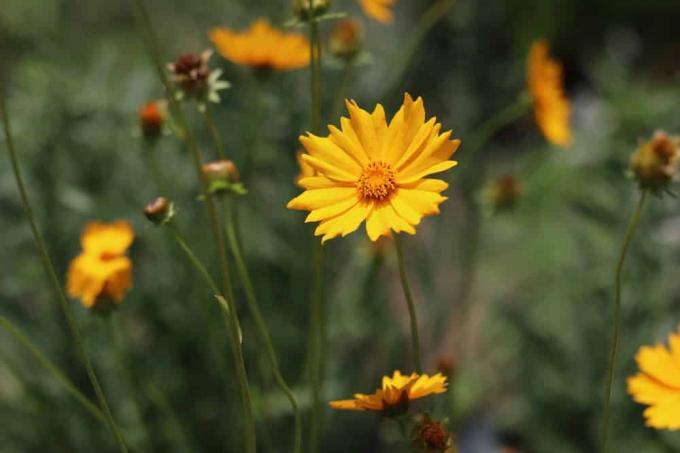
- Upright to bushy growth
- Growth heights vary between 10 and 80 cm
- Traditional are golden yellow and wheel-shaped flowers
- New varieties with red, pink and white shades
- Very long flowering period from June to October
- Need looser, humus-rich and nutrient-rich soil
- Cannot tolerate waterlogging, but can cope with dry phases
- Popular strains are Large Flowered Maidenhair and Early Sunrise
yucca(Yuca filamentosa)
The yucca is also known as the garden yucca and belongs to the agave family. Due to the impressive inflorescences, the plant appears exotic and gives the garden bed a Mediterranean flair. The attractive solitary shrub has a strong growth in width, so it needs enough space at the chosen location. Otherwise, the plant is quite undemanding and thrives on almost any soil without any problems.
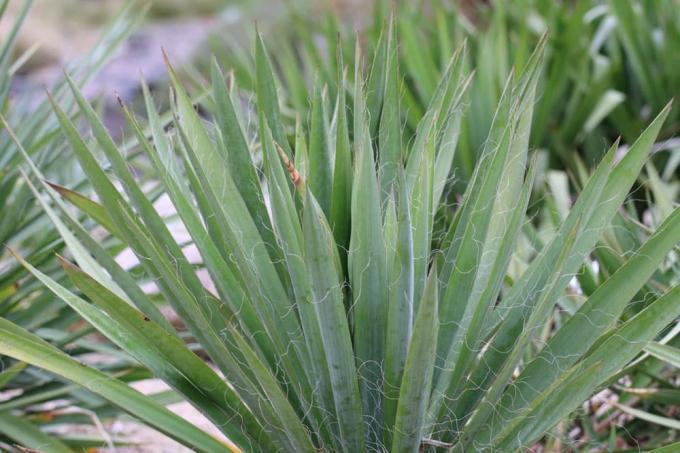
- Cluster-forming growth with palm-like tufts of leaves
- Reaches growth heights of 80 cm to 200 cm
- Forms creamy white and bell-shaped flowers
- Flowering period from July to September
- Stony to loamy soil, dry to moderately dry
- Alkaline, neutral or slightly acidic pH
- Nutrient-rich substrate is ideal, tolerates lime
- Fertilize in spring and cut back after flowering
- Popular varieties include Bright Edge, Polar Bear, and Bell Bush
R to Z
delphinium(Delphinium)
Delphiniums are among the best-known garden perennials in the local latitudes. The tall-growing plants belong to the buttercup family and form branched panicles of flowers, which grow on strong and hollow stalks. The deeply incised leaves are also typical of the plants. Unfortunately, delphiniums are susceptible to powdery mildew, and they also have to be protected from voracious snails when they sprout.

- Upright and slender growth
- Reach growth heights of 120 to 180 cm
- Light to dark blue or purple flowers, sometimes white
- Tried and tested varieties shine in gentian blue
- Flowering period from June to September
- Pruning after the main bloom encourages second blooms
- Loamy, nutrient-rich and fresh soils are ideal
- Popular varieties are Atlantis, Ball Gown, Piccolo and Völkerfrieden
Rosenwaldmeister(Phuopsis stylosa)
The rose woodruff is related to the local woodruff and belongs to the reddish family. It is a ground-covering and free-flowering cushion perennial that enchants with tart-scented flower balls. In addition, the plant is still very easy to care for, but it is not suitable for consumption. To ensure that the clumps sprout vigorously and grow more compactly, pruning at the beginning of spring and immediately after flowering is advisable.
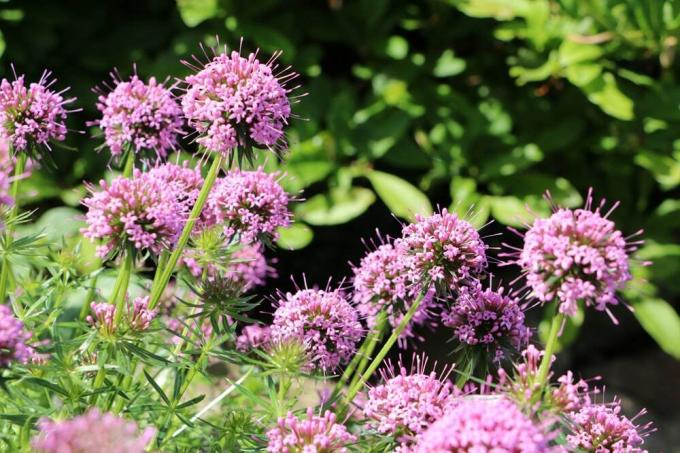
- Upright growth, forms clumps and carpets
- Reaches growth heights of 15 to 30 cm
- Flower color is reddish to pink
- Flowering period from June to August
- Fresh, sandy to loamy soil
- Alkaline to slightly acidic pH
- A humus-rich substrate with lime content is ideal
- Attractive varieties are purple glow and roseum
gypsophila(Gypsophila)
The gypsophila comes from the carnation family and is very popular in the local latitudes thanks to the large number of star-shaped flowers. It fits very well in a cottage garden or as a neighboring plant in a rose bed. Although the graceful plant looks very delicate, the gypsophila is tough and robust. The perennial is hardy, but needs additional frost protection in winter and must not be too wet, otherwise the deep roots will begin to rot.
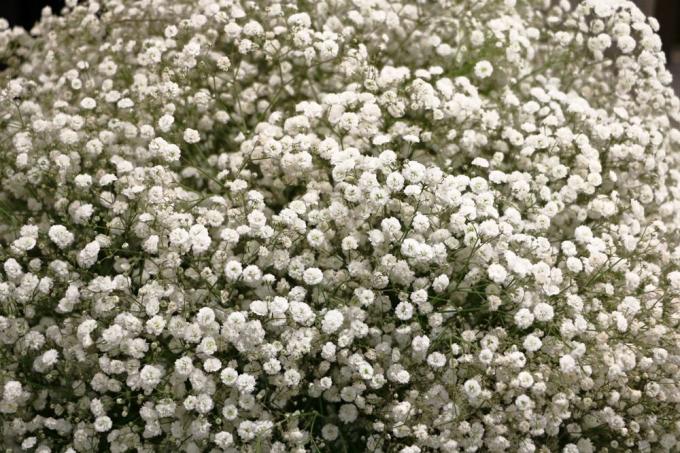
- Cut perennial with spherical growth
- Reaches heights of growth of 25 to 90 cm, depending on the variety
- Predominantly white, sometimes pink flowers
- Flowering period from June to September
- Well-drained, humus-rich and loose soil
- A nutrient-poor, sandy and moderately dry substrate is ideal
- Avoid waterlogging at all costs, create drainage
- Perennial varieties are flamingo and carpet gypsophila
hollyhock(Alcea)
Hollyhocks belong to the mallow family and originally come from the Mediterranean region. They have long been known as useful plants for medicinal purposes and are used to color food. Although hollyhocks are perennial and hardy perennials, they are very exhausting when they flower. That is why the blossoming visibly decreases from year to year. Constant rejuvenation is possible by sowing after flowering.
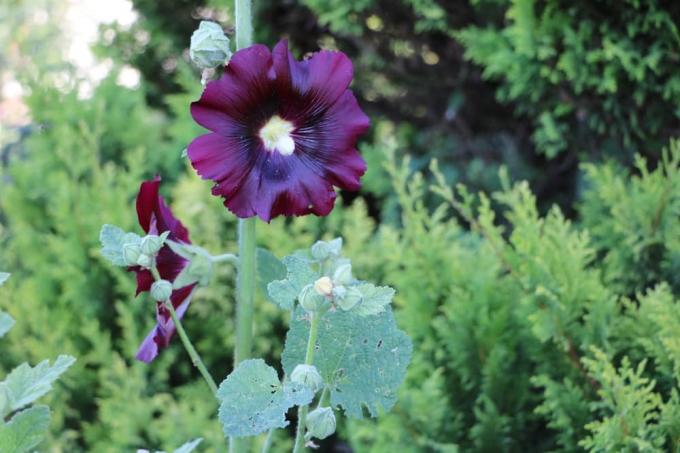
- Upright habit, produces rosettes
- Growth heights of up to 200 cm possible
- Yellow, orange, red, pink, purple and white flowers
- Flowering period from July to September
- Dry to moderately moist soil
- A substrate rich in humus and nutrients is ideal
- Neutral pH, tolerates lime
- Protect extremely long flower stalks with a sturdy stick
- Common hollyhock is widespread (Alcea rosea)
Lemon Thyme(Thymus citridorus)
With lemon thyme, the name already indicates its properties and characteristics. Both the leaves and flowers exude a strong aromatic citrus scent, they also taste fruity and fresh. Therefore, this perennial enriches every kitchen garden and has a variety of uses in the kitchen, both in the preparation of food and drinks.

- Dense, bushy growth, clump-forming
- Growth height of 20 to 30 cm
- Violet to pink flowers, strongly scented
- Flowering period from June to August
- Sandy to loamy soil, dry to moderately dry
- Only moderately nutritious substrate
- An alkaline to neutral pH is ideal, loves lime
- Fits well in herb and rock gardens
 Home editorial office
Home editorial office
Find out more about perennial lexicon

Lenten rose, Helleborus orientalis: 13 tips for care
The spring rose is one of the few plants that also blooms in winter. In order for the plant to bear its colorful flowers, however, certain requirements regarding location and care must be met.

Tree peony, Paeonia suffruticosa: Care from A - Z
With its large, eye-catching and colorful flowers, it is one of the noblest representatives of the peonies, the tree peony. Its natural home is China, which is why it is often referred to as the imperial flower. It presents its beautiful flowers between April and June.

Fat man: Care from A-Z | Planting distance and propagation
The shady areas under trees are neglected in many gardens, because only a few plants feel comfortable here. One of these few plants is the fat man (bot. Pachysander terminalis).
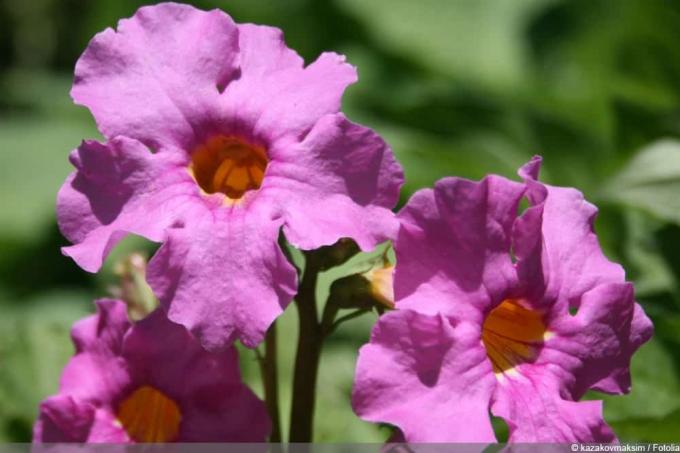
Flowering Fern: 14 Annual and Hardy Species | Care Instructions
A green fern with its beautifully designed fronds is a feast for the eyes in itself. It doesn't have to bloom to inspire. If flowers do appear, a garden gloxinia is actually at work. This flower is often incorrectly referred to as a blooming fern.
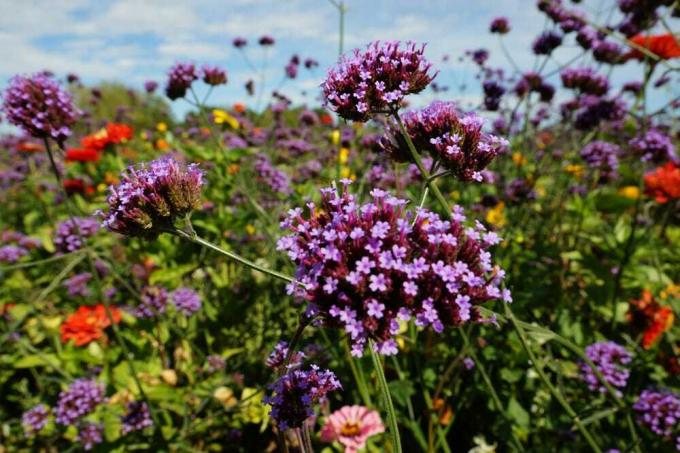
Patagonian Verbena, Verbena Bonariensis - Care Guide
Summer, sun, garden, flowers - here the Patagonian verbena is in its element, with fairy-like lightness purple flowers float on filigree stems above the flower bed and also attract all the butterflies area. Romantic gardeners love the effect of Verbena bonariensis, every gardener loves it Vigorous growth with the lowest maintenance requirements - verbena is a herb that benefits every garden brings.
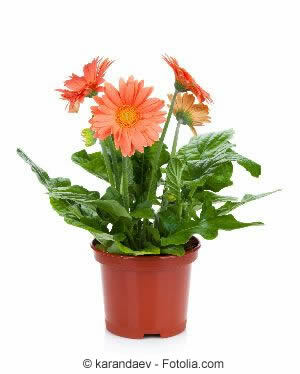
Pot gerbera - instructions for caring for gerberas in pots
The pot gerbera is a lot of fun, but requires a lot of care. It needs to be watered daily and fertilized regularly. A lot of light is a must and yet it must not be exposed to excessive heat. But if you treat her properly, she will thank you with her beautiful flowers.



